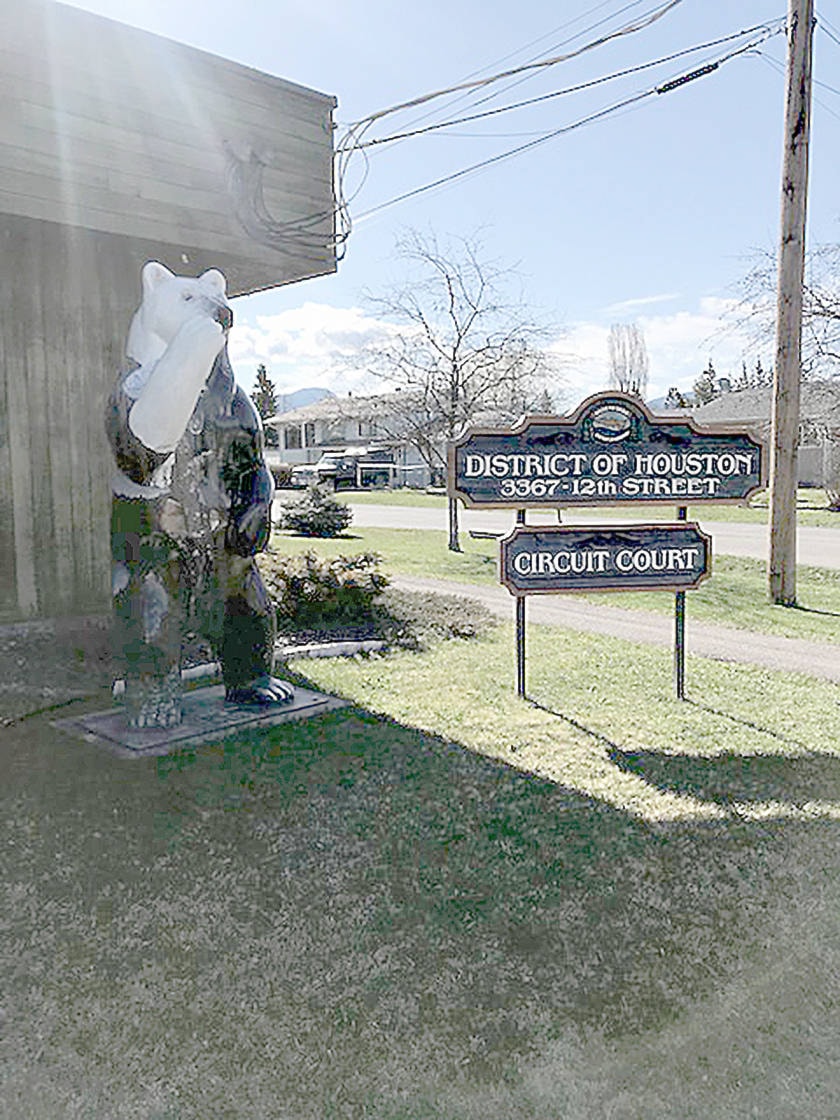Council is digging in deep in its investigation of ways to boost clearing of snow and ice from roads and sidewalks.
And that follows a discussion prompted by a five-page analysis and series of options for council prepared by operations manager Chris Lawrence.
Council members have asked Lawrence for more information leading from their discussion.
The District of Houston may come under criticism each winter as its crews clear snow frrom streets and sidewalks but a survey of neighbouring municipalities within the Lawrence analysis states it provides services no one else does.
And any increase or adjustment of its current policy could very well trigger tax increases tied to hiring and equipment operations.
“Overall, the District remains an outlier with respect to accumulation trigger, removal of driveway windrows, providing a driveway clearing service and staffing levels compared to road network size,” Lawrence wrote.
Clearing operations for the District’s Priority 1 list of roads begins when there’s two inches of snow on the ground and four inches for Priority 2 roads compared to three inches in Vanderhoof, Smithers and New Hazelton and four inches in Hazelton while Burns Lake has no set policy as to when its crews begin work.
The other services referred to by Lawrence — driveway windrows and driveway clearing for people with physical limitiations — come after the District crews clear roads and sidewalks and municipal parking lots and are not offered at all in Burns Lake, New Hazelton, Hazelton, Smithers and Vanderhoof although windrow clearing may take place time permitting in Burns Lake, New Hazelton and Hazelton.
As far as budget allocations for snowclearing, Vanderhoof tops the list at $405,000 with Houston second at $309,700, Smithers third at $200.870 and Burns Lake $90,000 of those municipalities providing figures.
Lawrence acknowledged that while there are similarities there are also differences in attempting to illustrate how each government does its snow clearing.
“While road networks are compared, the number of roadway accesses and intersections are not identified, which may impact snow clearing methods and costs,” he said.
And when it comes to options council may consider, Lawrence noted that the District is challenged in trying to meet the goals of its current policy.
“The streamlined team nears capacity during heavy snowfall events. Attempts to clear Priority 1 and 2 areas have not met the timelines stated in the policy. This creates a backlog of Priority 3 areas and tasks, increasing the number of requests for service,” he wrote.
Meeting the current policy would call for hiring two to four more people with Lawrence pointing out how that would be accomplished would depend upon how a service level is determined.
“If the desired solution is to provide surge-capacity only as opposed to base line capacity, casual or part time staff coud be utilized to achieve a more amenable network-to-staff ratio as opposed to seasonal or full-time staff,” he wrote.
One additional permanent full-time employee would add $89,800 to the District’s payroll, representing a tax increase of 2.09 per cent.
As it is, council added a permanent half time position in this budget year to provide for a quicker snowclearing response, resulting in a slight increase in property taxes to finance the hiring.
Priority 1 roads, ones where clearing starts after two inches of snow are main routes west of Buck Creek such as Caledonia to the Houston Christian School and east of Buck Creek with routes such as Hwy16 to 14 St to Butler Ave. and 9th and 10th Streets.
Priority 2 road are all those not in Priority 1 with clearing to start after four inches of snow. The priority 2 list includes all sidewalks and key parking lots such as at Cottonwood Manor, the municpal office/firehall, public works yard and 9th St. Parking at Hwy16. Fire hydrants are included as Priority 2.
Priority 3 snow removal begins after nine inches of snow and takes place in driveways with windrows, residences with snowboards, sidewalks not cleared previously, at the seniors’ activity centre and other property where health and safety are a factor. Removing compacted snow and ice and widening shoulders are also a Priority 3 item.
